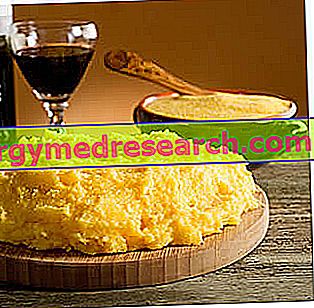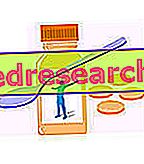The cells need oxygen to live. While this molecule is essential for the survival of the cells themselves, on the other hand, in particular circumstances, it can become harmful and give rise to free radicals.
Summary:
Free radicals Natural antioxidants Vitamin C as an antioxidant additive Antioxidant foods Cocoa, chocolate, antioxidants and health Antioxidants in cosmetics Antioxidants in herbal medicine Antioxidant vitamins Antioxidants as food additivesFree Radicals
Free radicals are molecules or ions that contain one or more unpaired electrons and are capable of autonomous existence.
Free radicals are produced in most of the body's cells (mitochondria) as a by-product of some metabolic reactions.
Free radicals are considered responsible for most degenerative diseases, aging and perhaps even cancer (mutations).
Many factors can trigger the generation of free radicals:
- ENVIRONMENTAL FACTORS: pollution, active and passive smoking, ultraviolet rays, prolonged psychophysical stress, alcohol
- FACTORS RELATED TO THE SUBJECT: transport of electrons in the mitochondria, metabolism of fatty acids, reactions of cytochrome p450, reconditioning systems of phagocytic cells
Among the most important free radicals found in aerobic cells, such as human cells, there are superoxides (O 2 -), hydrogen peroxide also known as hydrogen peroxide (H 2 O 2 ) and singlet oxygen.
All cellular structures can be damaged by interaction with oxidizing species:
- PHOSPHOLIPIDES: alteration of membrane fluidity
- NUCLEIC ACIDS: appearance of break points in the double helix of DNA with increased risk of mutations
- PROTEINS: metabolic (enzymes) and structural alterations
Endogenous antioxidants
The body has developed numerous mechanisms to protect itself from the damaging effects of free radicals; there are, for example, some enzymes capable of decomposing and sequestering oxidizing agents.

Glutathione incorporates selenium, an exogenous antioxidant that appears to decrease the risk of cancer.
The cell also has additional defense mechanisms available if the function of endogenous antioxidants is not sufficient.
In recent years there has been a lot of talk about the antioxidant power of melatonin which, according to some studies, exceeds the scavenger activity of glutathione by five times.
Exogenous antioxidants
Some substances present in food and in some food supplements are able to intervene favorably in the detoxification processes, activating biological shelter systems. These natural antioxidants are vitamins A, C, E, selenium, carotenoids, lycopene, coenzyme Q-10 and lipoic acid. To learn more, see: Antioxidant foods
Antioxidants and Sports
During aerobic exercise, the body's oxygen consumption can increase up to 20 times and up to 100 times in skeletal muscle. If on the one hand this mechanism makes it possible to increase the quantity of energy produced, on the other it also dangerously increases the production of oxidizing agents.
In general, the oxidative stress of the muscle is increased by acute exercise and decreased by training.
Sporting activity also improves the disposal mechanisms by enhancing the activity of endogenous antioxidants. This feature explains why physical exercise makes people who practice it regularly look more beautiful and young.



